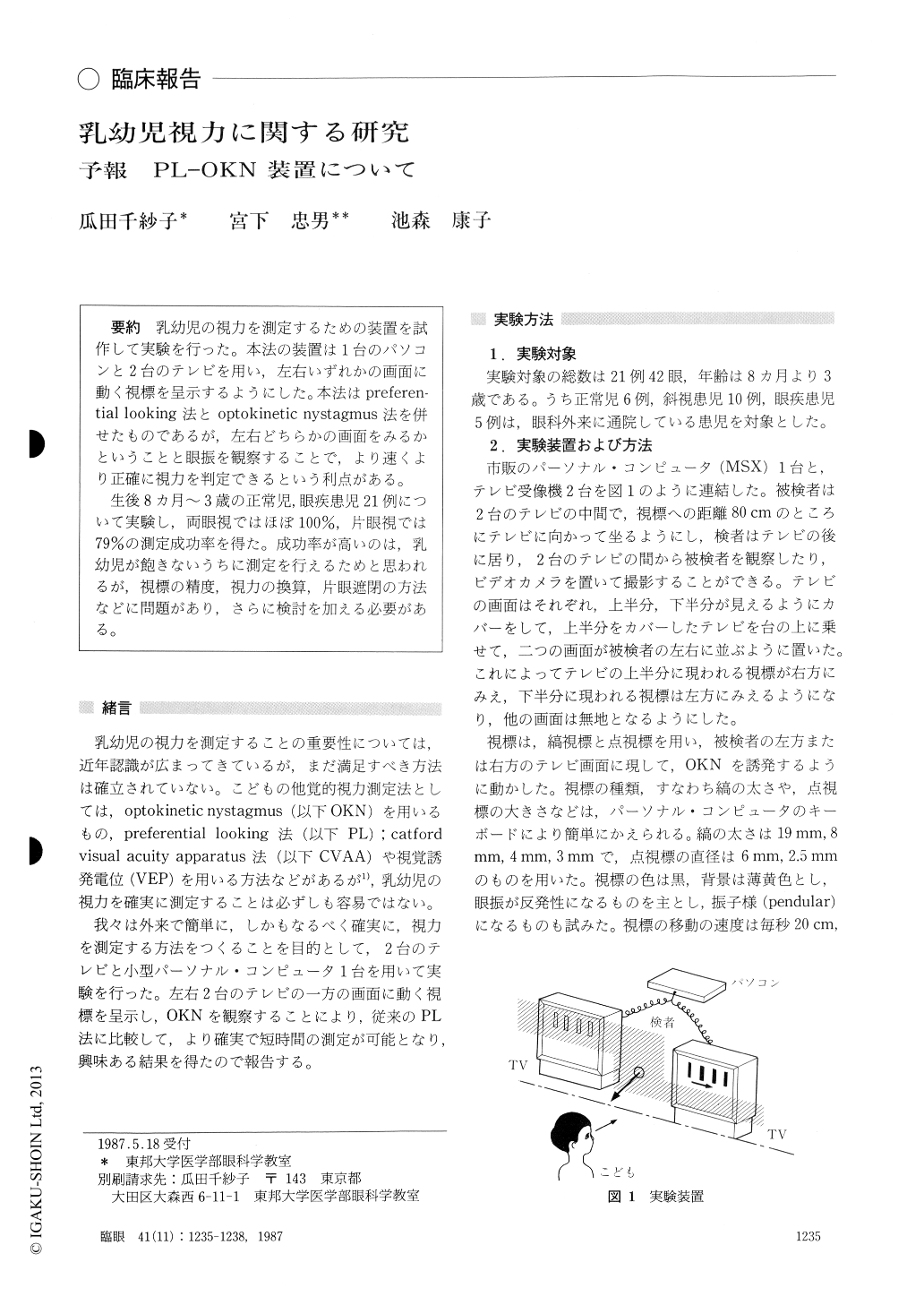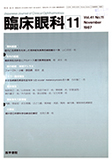Japanese
English
- 有料閲覧
- Abstract 文献概要
- 1ページ目 Look Inside
乳幼児の視力を測定するための装置を試作して実験を行った。本法の装置は1台のパソコンと2台のテレビを用い,左右いずれかの画面に動く視標を呈示するようにした。本法はpreferen-tial looking法とoptokinetic nystagmus法を併せたものであるが,左右どちらかの画面をみるかということと眼振を観察することで,より速くより正確に視力を判定できるという利点がある。
生後8カ月〜3歳の正常児,眼疾患児21例について実験し,両眼視ではほぼ100%,片眼視では79%の測定成功率を得た。成功率が高いのは,乳幼児が飽きないうちに測定を行えるためと思われるが,視標の精度,視力の換算,片眼遮閉の方法などに問題があり,さらに検討を加える必要がある。
We developed an apparatus to evaluate the visual acuity in infants. It consists of a personal computer and two video display terminals in color. A moving target is displayed on either of the terminals. The apparatus is based on preferential looking (PL) method and also utilizes optikinetic nystagmus (OKN). The visual acuity is estimated by observ-ing which display terminal the test subject is look-ing at and by observing OKN.
We applied this method to 21 infants aged 8 to 36 months. These test subjects included both normalas well as those with squint or organic eye diseases.Visual acuity could be measured in 100% of the cases when tested binocularly and in 79% monocularly.
The high success rate in measuring the visual acuity in infants with the present methods seemed to be due to the speed with which the test can be completed. This prevents the infants from losing interest in the examination. Refinement in the test targets and conversion of the value into conven-tional denominators of visual acuity are features what await further investigation.
Rinsho Ganka (Jpn J Clin Ophthalmol) 41(11) : 1235-1238, 1987

Copyright © 1987, Igaku-Shoin Ltd. All rights reserved.


